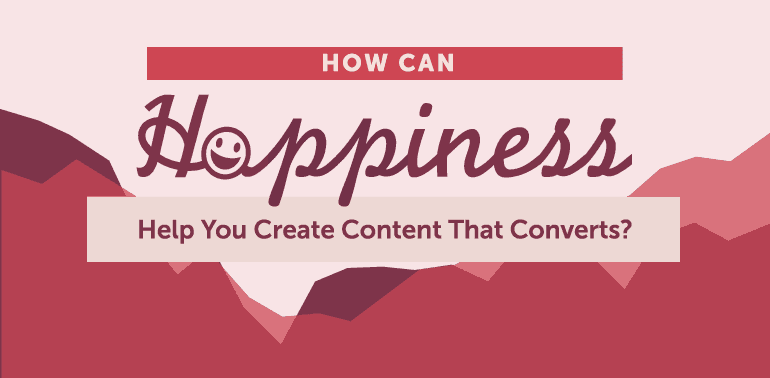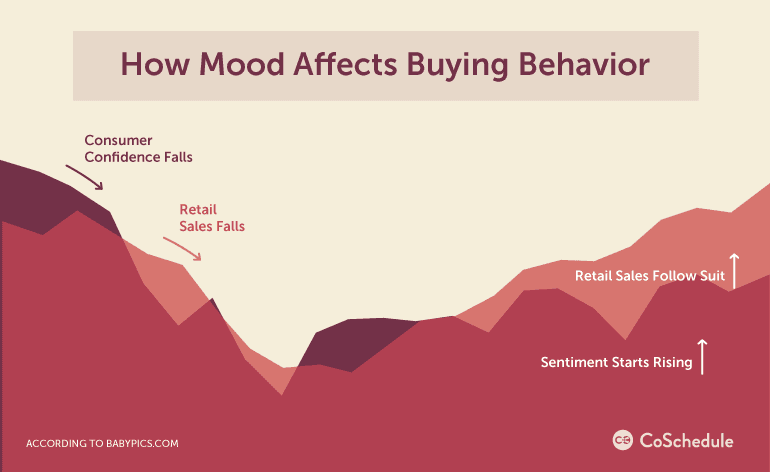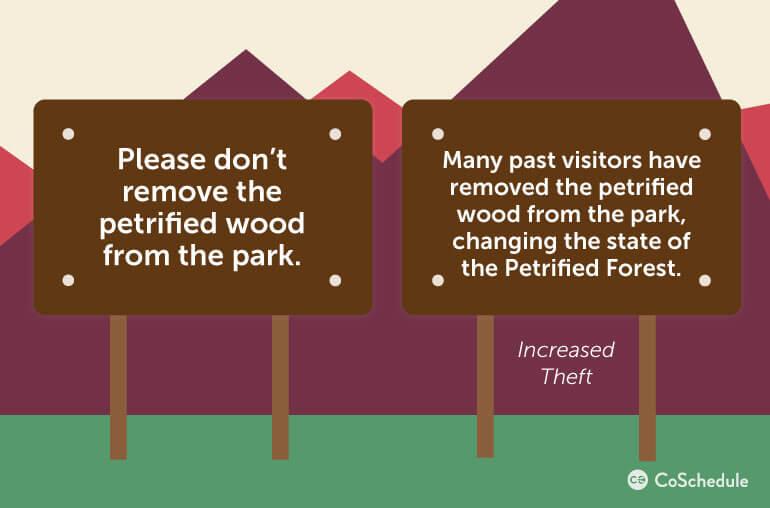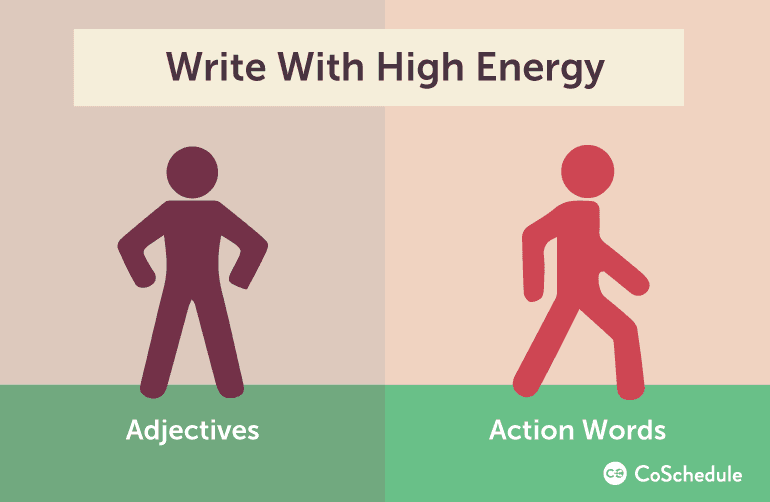How To Create Content That Converts By Writing Your Reader Happy
 Do people spend more money if they are happy or if they are sad?
There is a tendency to avoid negativity in headlines and copy, although there are times when negative headlines are actually more powerful. Generally, though, the more common approach is to avoid negativity when creating our content.
But should we? Are we doing the right thing by keeping our copy positive?
Do people spend more money if they are happy or if they are sad?
There is a tendency to avoid negativity in headlines and copy, although there are times when negative headlines are actually more powerful. Generally, though, the more common approach is to avoid negativity when creating our content.
But should we? Are we doing the right thing by keeping our copy positive?
How To Create Content That Converts By Writing Your Reader Happy #contentmarketing via @JulieNeidlinger
Click To TweetHow Mood Affects Buying Behavior
Let's go back and revisit that opening question: Do people spend money (or, in your case, convert) if they are happy or if they are sad? As individuals, we often go shopping when we are down. Sad shoppers tend to spend more, and people who are in a grumpy mood actually feel better after shopping (at least until the bills arrive), and a foul or depressed mood often leads to more impulse buying.Sad shoppers spend more. Here's how happy content sells. #contentmarketing
Click To Tweet Consumer confidence is correlated with retail sales, which is different from cause and effect but effectively shows how our mood has a connection to our impulse to buy. Consumer confidence is that special mix where a person feels pretty good about the state of the economy and their own personal financial state.
So, you could summarize it as follows:
Consumer confidence is correlated with retail sales, which is different from cause and effect but effectively shows how our mood has a connection to our impulse to buy. Consumer confidence is that special mix where a person feels pretty good about the state of the economy and their own personal financial state.
So, you could summarize it as follows:
- A sad individual might use retail therapy to improve the mood in the moment.
- A grumpy individual makes impulse purchases to break out of a rut.
- A sad group does not want to make purchases at all.
- Confidence inspires people to buy.
Your #content should alleviate worries and sadness. That's how to get readers to convert.
Click To TweetHow To Create A Positive Mood In Your Writing
When you visit a store and approach a salesclerk for help as you make your buying decision, does their attitude have an effect on you? For me, if they are negative, down, grumpy—I'm less likely to complete the current sale or, even if I do, I probably won't come back. When you create content with a conversion (i.e. sale) in mind, your content is the salesclerk. How do you make sure your salesclerk is happy?1. Highlight the desirable behavior.
Blogger Bushra Azhar wrote, on the Copyhackers blog, that highlighting desirable behavior leads to positive action. She found that, particularly in the use of social proof in your copy, that framing that proof in a negative way inspired the wrong reaction. A study done by two National Parks found that copy that highlighted the negative caused the very behavior they had hoped to stop. Azhar went on to discover other similar examples, pointing out that careless negative copy could even cause the bystander effect in your reader, that curious situation where we don't help victims if others are around us. Too much negative copy can also make people feel that the situation is hopeless.
Write copy that states the behavior you want. "Please click the blue button" is, however uninspired, better copy than "9 out of 10 people won't click the blue button."
When your readers see that, they probably think "heck, if 90 percent of people won't click, I'm not going to. All of those people can't be wrong." And that's social proof, swinging around and biting you in the behind.
This is a tricky to do, if you are trying to create exclusivity. But create your exclusivity in a way that doesn't get social proof going against you.
Azhar went on to discover other similar examples, pointing out that careless negative copy could even cause the bystander effect in your reader, that curious situation where we don't help victims if others are around us. Too much negative copy can also make people feel that the situation is hopeless.
Write copy that states the behavior you want. "Please click the blue button" is, however uninspired, better copy than "9 out of 10 people won't click the blue button."
When your readers see that, they probably think "heck, if 90 percent of people won't click, I'm not going to. All of those people can't be wrong." And that's social proof, swinging around and biting you in the behind.
This is a tricky to do, if you are trying to create exclusivity. But create your exclusivity in a way that doesn't get social proof going against you.
"9 out of 10 people miss out on this opportunity. But you don't have to."
2. Tell readers what can be, not what should be.
You've experienced it. When you read a blog post full of "don'ts" and "shoulds", you likely feel, after a while, that there's no point bothering. Language that suggests, even if unintentionally, that we are hopeless does not make a reader super giddy to latch onto your product. The "shoulds", especially, are wearing after a while. Think about the internal conversations you have in your head.
The "shoulds", especially, are wearing after a while. Think about the internal conversations you have in your head.
"I shouldn't have eaten that." "I should pay that bill." "I should exercise more." "I should be a harder worker."It goes on and on and after a while, you feel mostly like a failure and quite anxious that you're never going to catch up and do all the things you should do. You most certainly don't need a blog post filled with a pile of "shoulds" to add to the load. Yet, your copy is doing that, isn't it? It's telling readers what they should do. Again, this is all about the language you use. How can you tell someone what they should do without reminding them of the "shoulds" already running through their head?
- Find another word. It's that easy. If you write a sentence with the word "should" in it, find another way to write it. Find another word.
- Use the implied "you." Cut the word "should" out totally by relying on the implied you. Look at #3 below. Instead of "you should tap into consumer confidence", I simply wrote "tap into consumer confidence." Such a subtle thing, but it helps.
- Balance what is and what should be. I hate to write a post that is all about what the reader should do. I try to find a mix, whether that means starting with some research and proof to prime the pump, or an introduction of another nature. Can you provide the reader with the confidence that they have what it takes to balance out that they are missing something? You should. (heh.)
3. Tap into that consumer confidence.
If confidence inspires a nation to buy, personal confidence can prompt your reader to do the same. Are you creating confident readers? Here's a quick checklist to see if you are:
Here's a quick checklist to see if you are:
- Copy full of caveats. Is your copy full of caveats, those words and phrases that let you back out of a stance if you lose face? Do you find yourself using "I think" or "Maybe" or "Possibly" or "I believe" or any other word that allows you to say something bold while also leaving weak wiggle room? Have you ever used the defense, when called on something you said, that "I just said it's what I believe, not that it's always true"? Because that isn't copy that inspires confidence. After prolonged exposure to these filler words, the reader sees you as almost apologetic about your ideas. Write in confidence, and remember to cut out these words when editing. Skip the preface and state your idea boldly.
- You walk your talk. You may be writing lots of helpful content on how to be a better this and an awesome that, but do you live those words yourself? A reader might not know if you don't, but it does show in both your blog copy as well as in the ensuing comments section. There's nothing worse than reading a great post about how to organize your life and then asking the author if it has worked, only to hear "I don't actually know...I don't use this method."
- Find testimonials and experts. While testimonials aren't appropriate for all copy, you should use them to show that what you are talking about is true. Or, find research or experts that can support your findings so that the reader feels confidence not only from the outside expert, but from a wee bit of social proof ("it's not just the author that says this—others do, too!"). Just as a newspaper reporter must find people to quote to show that the report is not fabricated, you should do the same in your copy.
- Show with video. I'm a sucker for infomercials, because when they show how the amazing product works right there on the screen, I'm completely convinced. Depending upon what you're writing about, use video and photographs to show that yes, this is really the truth.
Confident readers are trusting readers, and trusting readers convert. #contentmarketing
Click To Tweet4. Write with high energy.
High energy (without slipping into freakish psycho making people back away slowly) makes the sale. The lack of high energy kills great copy. What do you think is the biggest killer of copy energy? My vote goes for passive voice.
Sometimes, passive voice happens. It is acceptable when the person/thing acted on needs attention, or when the actor does not. Or, maybe you know the action and need to convey it in your copy, but don't know who did it. You can't find the facts. And so, you resort to "the bottle was filled" because you don't want to say "Jane filled the bottle" if you don't know if she did or not.
Passive voice exists for a reason. But continuous use of passive voice leads to a kind of dry and almost academic copy. That is not high energy. Consider the following paragraph, and how it makes you feel when you read it.
What do you think is the biggest killer of copy energy? My vote goes for passive voice.
Sometimes, passive voice happens. It is acceptable when the person/thing acted on needs attention, or when the actor does not. Or, maybe you know the action and need to convey it in your copy, but don't know who did it. You can't find the facts. And so, you resort to "the bottle was filled" because you don't want to say "Jane filled the bottle" if you don't know if she did or not.
Passive voice exists for a reason. But continuous use of passive voice leads to a kind of dry and almost academic copy. That is not high energy. Consider the following paragraph, and how it makes you feel when you read it.
The solution is made clear. These tips are given to you by me. The copy should be carefully considered by you. This post is hopefully enjoyed by our readers.No action. No energy.
The solution is clear. I gave you these tips. You should consider this copy carefully. Our readers enjoy this post.Much better. How else do you write with high energy? Use action words instead of adjectives. Inject cacophony into your copy. Vary sentence and paragraph length. Read your post out loud before publishing to see how it sounds and feels, if it seems to slow in parts or if it moves along at a crisp, clear pace. Those slow parts will need editing.
How Will You Write Content That Converts?
People spend money when they need a distraction or a pick-me-up. They also spend money when they are confident that they have it to spend and that they won't find themselves in trouble for doing it. Let your copy inspire confidence and hope so that your readers are inspired to buy no matter what range their mood is in.How Can Happiness Help You Create Content That Converts? #contentmarketing
Click To Tweet

